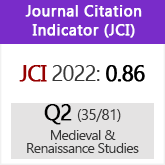La “quema”. Trayectoria histórica de un impuesto sobre los flujos comerciales de Castilla y Aragón (siglos XIV y XV)
DOI:
https://doi.org/10.3989/aem.2000.v30.i1.496Abstract
The "quema" was a tax imposed on trade between the kingdoms of Aragón and Castile, in order to obtain money to compensate for injuries and losses to the subjects of both kingdoms that had been victims of acts of aggression committed by subjects of the other kingdom. It was intended to replace the letters of marque. It was introduced in 1329, though it had some precedents in the previous decades. During the first half of the fourteenth century it was introduced and suppressed several times, but after the war between Castile and Aragón (1356-1375), there came a period of consolidation for the tax. During this period the king of Aragón became direct beneficiary of the product of the tax, because he bought their rights to compensation from most of his subjects that had claims against Castillans. And that's why he opposed himself to the suppression of the tax at the end of the century, against the desires of the Castillans. But during the first half of the fifteenth century this tax continued to be exacted only in the kingdom of Valencia.
Downloads
Download data is not yet available.
Downloads
Published
2000-06-30
How to Cite
Diago Hernando, M. (2000). La “quema”. Trayectoria histórica de un impuesto sobre los flujos comerciales de Castilla y Aragón (siglos XIV y XV). Anuario De Estudios Medievales, 30(1), 91–156. https://doi.org/10.3989/aem.2000.v30.i1.496
Issue
Section
Miscelaneous Studies
License
Copyright (c) 2000 Consejo Superior de Investigaciones Científicas (CSIC)

This work is licensed under a Creative Commons Attribution 4.0 International License.
© CSIC. Manuscripts published in both the printed and online versions of this Journal are the property of Consejo Superior de Investigaciones Científicas, and quoting this source is a requirement for any partial or full reproduction.All contents of this electronic edition, except where otherwise noted, are distributed under a “Creative Commons Attribution 4.0 International” (CC BY 4.0) License. You may read here the basic information and the legal text of the license. The indication of the CC BY 4.0 License must be expressly stated in this way when necessary.
Self-archiving in repositories, personal webpages or similar, of any version other than the published by the Editor, is not allowed.














